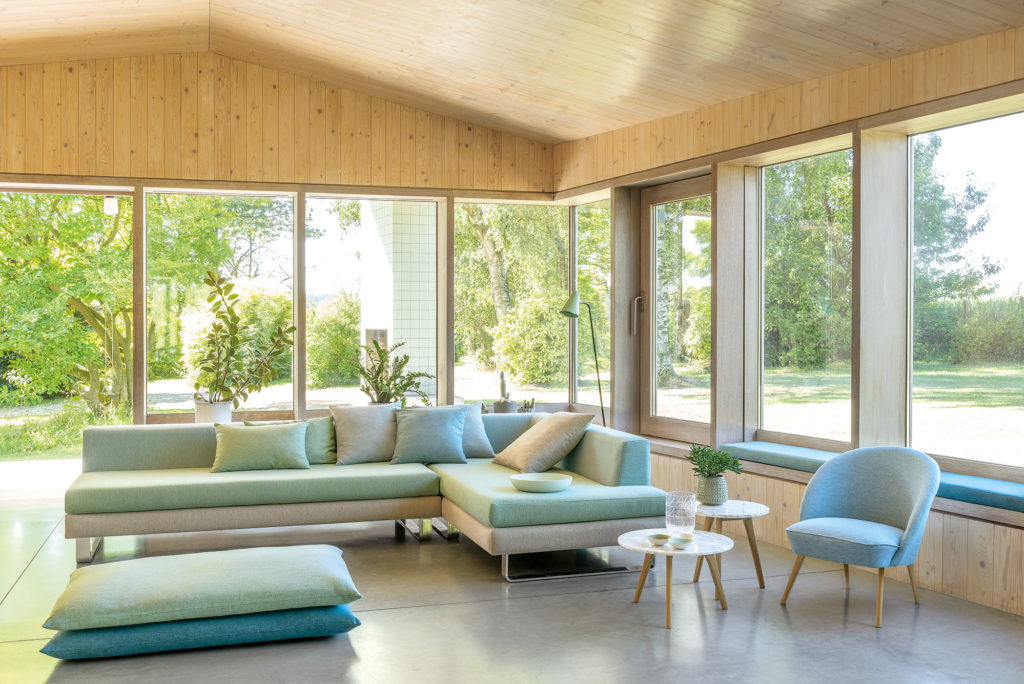What healthcare interiors can learn from the hospitality sector
What do hotels have to do with hospitals?
It all comes down to a few shared concepts – sharing of space, the volume of traffic and ease of hygiene.
Traditionally, healthcare interior design has focused on the utilization of space. It has always had the needs of the patients and doctors using it in mind – sometimes to the detriment of interior spaces having a human touch.
This article looks at restoring that human connection between people and the healthcare spaces they occupy
We’ll be taking inspiration from hotel design that can be applied to redesign healthcare spaces. People, after all, are more than the parts of them that need healing.
Hospitality interior design has proven that it can be friendly and homey while also being easy to clean and accessible to large amounts of traffic – all things that healthcare interiors can learn from.
Let’s get to it.

Entrance lobby interior design for a Hospital in the Kingdom of Saudi Arabia - Behance
Healthcare interior design doesn’t need to be clinical
If you think of hospitals, you probably think of drab public spaces, endless, cluttered corridors and wards that are coldly practical and starkly functional.
Somewhere along the way, hospitals have lost their need for warm, inviting interiors, instead of going for sleekly pragmatic ones that probably are the cheapest but most efficient option.
Hospitals are first and foremost spaces focused on facilitating the large volumes of traffic that they see every day, and ease of cleaning – which makes sense, of course.
Designed with sanitation, accessibility and efficiency in mind, there is often not much space left to focus on the ambience.
While this is fine for the bottom line of the healthcare facility, these kinds of interior design decisions leave the end-users of those interiors (in this case, the patients) out in the cold.

Hicks Orthodontics by BarberMcMurry Architects
Hospitality design in a healthcare setting
In fact, spaces that feel as far away from hospital settings as possible can really help long-term patients to feel a bit more in touch with non-hospital life. Family-friendly meeting spaces with modular furniture can help this.
So can reclining chairs at bedsides in the rooms themselves – guests can be comfortable and able to catch a few hours’ sleep without having to leave their loved ones alone.
If you’ve visited someone in hospital for any amount of time, you’ll know that chairs are often sparsely available & very uncomfortable.
Why the balance and flow of space is important for healthcare settings
Focusing on the aesthetics and ambience of healthcare spaces can help to minimize the stress of patients, their visitors and the staff themselves.
Accessibility is key here. Hospitality and healthcare settings both have to accommodate everyone with every level of mobility while also being comfortable and relaxing.
What we are arguing for is the redesign of healthcare to promote a functional luxury, one that takes the senses of its occupants – touch, sight, emotions – into account as well as hygiene needs.

Wimmera Uniting Care - Wimmera region, Victoria, Australia

Even functional interiors can be friendly
Hotel design considers that personable angle of interior design. It takes the art of creating an inviting space into account - where hospitals usually miss the mark.
Areas that healthcare design traditionally focuses on include lighting and colour, factors that are very important in an urban, built environment.
The psychological power of colour in spaces like train stations, airports and healthcare settings is proven to influence the mood of people who might be anxious, emotional or even disoriented.
Landscaping for healthcare design is vital
95% of people who walked through a hospital’s garden reported therapeutic effects.
Layering and texture in hospital rooms and public spaces can help to bring natural elements inside for patients too ill to go outside.

Natural Birth Unit at University Hospital HM Nuevo Belén, Spain
Healthcare technology and easily-cleaned materials
Limiting the number of porous surfaces is paramount to an antimicrobial, easily cleaned environment. That means using harder materials like glass, plastic, metals, varnished wood, and glazed ceramics.
Durable and able to withstand repeated scrubbing, these materials are perfect for the healthcare industry.

The Evergreen Homeland, assisted living facility, Shanghai China
The science of sleep is redesigning healthcare
Sound absorption is very important for healthcare architecture. For hospital patients just as for hotel guests, a good night’s rest is very important!
Controlling rising noise levels is the prime objective of what’s called acoustic design.
Primary care design for the people
The healthcare industry is taking cues from hotel interiors, designing places for people rather than focusing solely on the machinery that helps them or the local hygiene standards.
This means ditching institutional design in favour of more organic spaces that promote nature and wellness.
There’s a strong link between being physically well and feeling good, and we’re glad to say that the design of healing spaces is finally sitting up and taking notice.